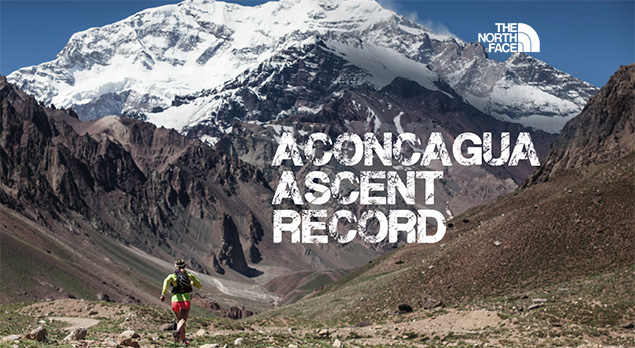Fernanda Maciel Aconcagua Ascent Report

Aconcagua stands at 6,691m high and is the highest peak in the Americas. The North Face athlete Fernanda Maciel became the first woman to make the ascent, and descent, this February by running from the entrance of Aconcagua Provincial Park to the mountain summit – a distance of 45km – and then back again in under 24 hours. Battling snow, ice, steep gradients and severe altitude, she managed to complete the feat in the incredible time of only 22 hours and 52 minutes.
A mountain run like this, with extreme conditions and terrain, must require specialist training. What did you do differently to prepare compared to a ‘normal’ ultra-mountain running event?
I did a lot of training going up and down carrying 10kg weight to gain strength in my ankles, back and quadriceps. It was also important to improve my proprioception to get a better balance to run at high altitude and in exposed places. I also climbed long flights of stairs carrying 2kg weight: seven series of two minutes climbing stairs. I also used the ropes to get strong arms, carrying weight in my back, abs and squats.
What did the effects of altitude have on your body throughout the Aconcagua ascent?
I got altitude sickness very easily, because it’s just 43% oxygen close to the summit. It was cold. I felt that I was falling asleep; I was coughing and got a headache; it was difficult to control the pressure in my brain and lungs. I lost energy due to the temperature, which was –25°C, and my pace was slower the nearer I got to the summit.
Did you have support on the run, and was it helpful to share the experience and have company?
I had the chance to get water and more gear at Plaza de Mulas (base camp at 4,300m). Cabeza (Alejandro Pereira), a very strong porter from Argentina, followed me during my ascent from Plaza de Mulas to the summit and back to base camp. He’s a very positive person and fast climber and his company was great. The 50km run from the park entrance to Plaza de Mulas and back I did alone. The most important thing was I knew Cabeza was close to me. If I felt really bad or if I got lost close to the summit, he was there.
What was the hardest part of the record-breaking Aconcagua attempt: the physical or the mental?
After training in big snowstorms my mental part was good. Both physical and mental were in equilibrium, but the physical part during my project was the hardest. It’s crazy how my body reacted at 5,000m to 6,000m (20,000ft). I couldn’t balance; I was falling asleep and walking at such a slow pace. It was very cold. The coldest time on Aconcagua is 6am, and I didn’t have energy in my body to push hard for the ascent. When the sun came up though I felt better, and I could reach the summit at a faster pace.
Do you have favourite foods for running ultra-distances, and could you use these same foods for Aconcagua?
Usually I have gels, bars and sushi during my ultra trail races. The Aconcagua project was completely different – just hot teas, some peanuts and sweets – because without oxygen in the air my stomach couldn’t work. What gear did you run in, and how did it differ from that of a mountaineer who would typically do this route? Thermoball™ jacket (Thermoball™ technology is a synthetic alternative to down), waterproof jacket, long sleeves and long pants from The North Face. I use the MT snow shoes, also from The North Face, to be able to run on ice, snow and rocky terrain. I had the best gear ever to do this fast ascent.
Who, or what, motivates you? What is it that keeps you going through the tough times in a race?
I love to run. When I run, I feel free like an animal, without ego and beautiful inside with peace. I feel small on such high mountains and big when I touch the peak.
Any advice for people just starting to run? How can they progress to ultradistances?
They have to do exercises for quads and ankles to help avoid injuries and so they can enjoy going up and down with strong legs. Don’t do too much. Choose one or two days per week to do long-distance runs. The other days, do shorter runs but at a faster speed. During the long training runs and races, two important things: carbohydrate and mineral salt. Remember what motivates you to run, and don’t forget it. Running has a strong following in the UK: fell, trail and road, with ultradistances fast growing in popularity.
Have you ever run in the UK or considered attempting any of their classic ultra-races?
I’ve never been in the UK for a race. It would be awesome if I had this opportunity. I’ve seen so many beautiful landscapes in the UK that I’m sure I’d love that.
This article was originally published in the Summer 2016 edition of the Mountain Adventure Guide. Read the full issue here.






